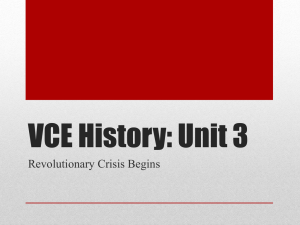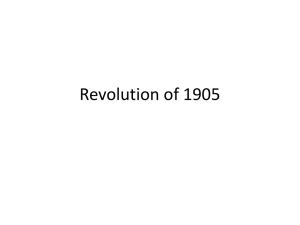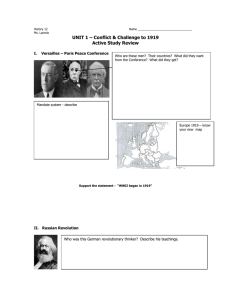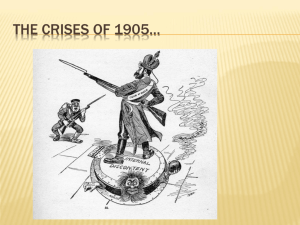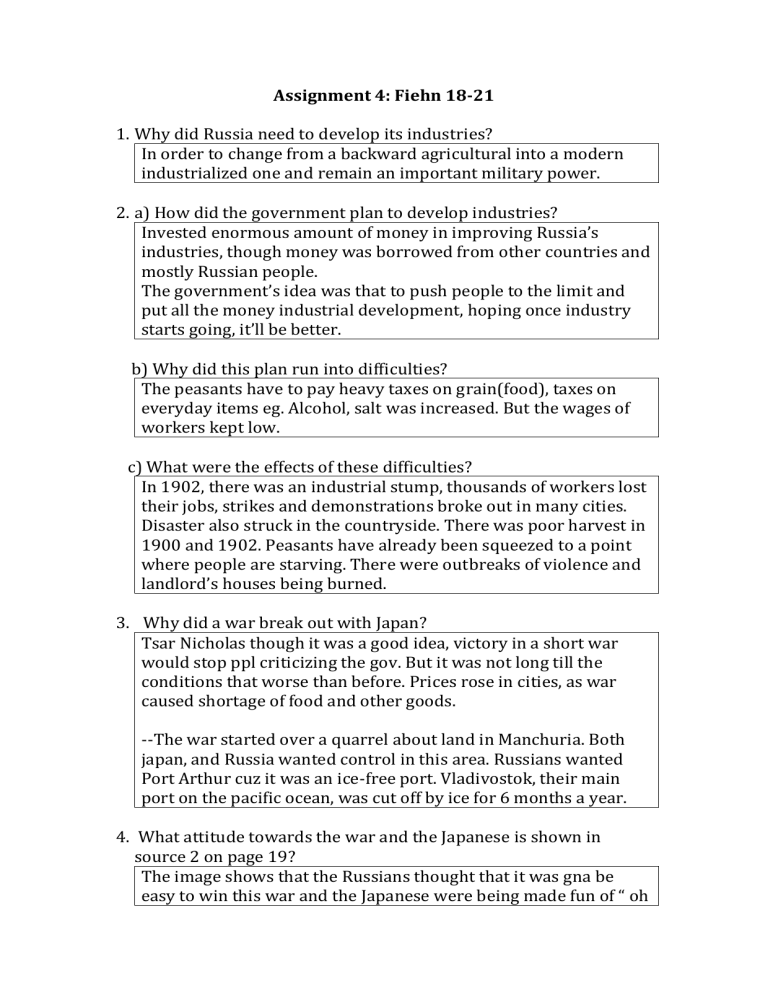
Assignment 4: Fiehn 18-21 1. Why did Russia need to develop its industries? In order to change from a backward agricultural into a modern industrialized one and remain an important military power. 2. a) How did the government plan to develop industries? Invested enormous amount of money in improving Russia’s industries, though money was borrowed from other countries and mostly Russian people. The government’s idea was that to push people to the limit and put all the money industrial development, hoping once industry starts going, it’ll be better. b) Why did this plan run into difficulties? The peasants have to pay heavy taxes on grain(food), taxes on everyday items eg. Alcohol, salt was increased. But the wages of workers kept low. c) What were the effects of these difficulties? In 1902, there was an industrial stump, thousands of workers lost their jobs, strikes and demonstrations broke out in many cities. Disaster also struck in the countryside. There was poor harvest in 1900 and 1902. Peasants have already been squeezed to a point where people are starving. There were outbreaks of violence and landlord’s houses being burned. 3. Why did a war break out with Japan? Tsar Nicholas though it was a good idea, victory in a short war would stop ppl criticizing the gov. But it was not long till the conditions that worse than before. Prices rose in cities, as war caused shortage of food and other goods. --The war started over a quarrel about land in Manchuria. Both japan, and Russia wanted control in this area. Russians wanted Port Arthur cuz it was an ice-free port. Vladivostok, their main port on the pacific ocean, was cut off by ice for 6 months a year. 4. What attitude towards the war and the Japanese is shown in source 2 on page 19? The image shows that the Russians thought that it was gna be easy to win this war and the Japanese were being made fun of “ oh you funny j***”. 5. Why would this attitude make defeats in the war more shocking for the Russians? cuz they that there is no chance of losing, and how Russians thought that the Japanese were not as good as them(but in a more arrogant way) 6. What other effects did the war have? 7. a) What were the workers asking the Tsar for in the petition (source 3 on page 19)? For reduce working day to 8 hours, provide minimum wages of a rouble a day. b) What does the petition (source 3 on page 19) tell you about the attitudes of the people towards the Tsar at this time? Angry ”officials have been brought to the country to complete ruin and involved it in shameful war” 8. Does Gapon’s account of Bloody Sunday (source 5 on page 20 agree or disagree with the other sources? Give examples. It didn’t rly agree w source 3 because it was from a worker petition which father Gapon organized, the text was begging Tsar to change the laws, but source 5 was the revolution breaking out. 9. Look at how the people are represented in Source 7 on page 20. What do you think were the aims of the artist who painted the picture? To show that the military/Tsar was cruel enough to fire on their own people, and drawing the people’s clothing where it all seemed very old implying that they’re very poor and tired and from their faces they seem scared and in need for help. 10. Source 6 on page 20 is used in many history books to show troops firing on the crowds on Bloody Sunday. In fact is comes from a film about this event made in 1925. Should history texts use this photograph? Explain your answer. Yes, in order to show the imagine of how it looked like. 11. How did Bloody Sunday change the way people viewed the Tsar? Ppl no longer feel safe in his power, no trust. 12. What were the other consequences of Bloody Sunday? Work stopped everywhere; railways, all factories, workshops, university, all schools, etc (everyone). Whole population was on streets. Whole country of demonstrators or sightseers. 13. Copy and paste your table from assignment 2 question 10 and add information from pages 18-21.
![Leader_Analysis_Sheet_Peter_the_Great[1]](http://s3.studylib.net/store/data/009220992_1-b864ff548a7d360a25262ba94c316f4a-300x300.png)

